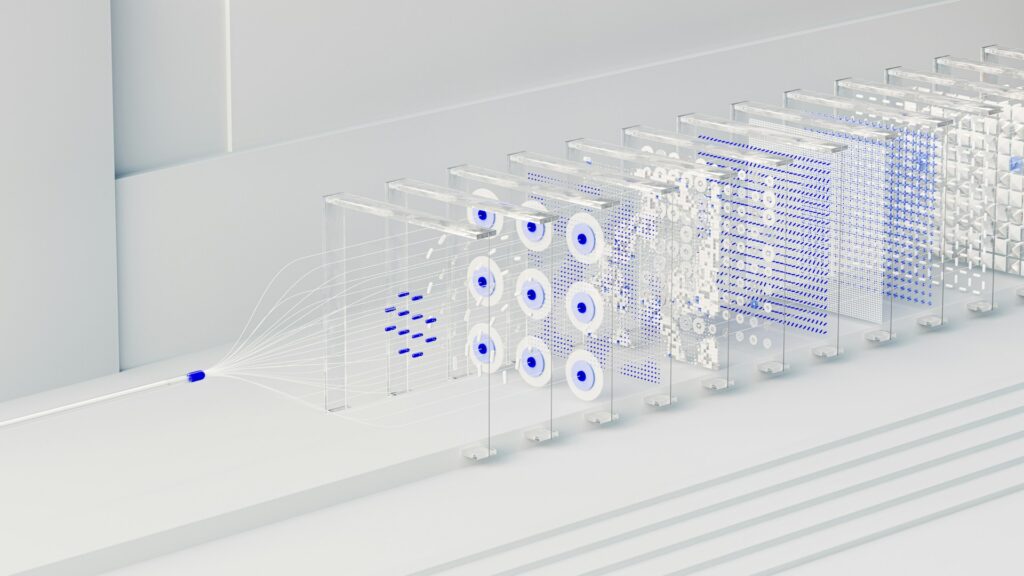You ask for creativity and get a bland summary. You ask for insight and get a Wikipedia-style reply. Frustrating, right?
Here’s the thing. It’s not the AI’s fault. It’s your prompt.
These large language models are incredibly powerful, but they don’t know what you mean unless you tell them clearly. They need specific, structured instructions to shine.
That’s where this guide comes in. I’ve put together 10 copy-paste prompt templates that actually work. Use them and you’ll start getting sharper, more creative, and way more useful answers right away!
Contents
Why Your LLM Prompts Need a System

Most people just type a quick, vague sentence and hope for the best. That’s what we call a “one-shot” prompt. It’s basically a gamble.
The problem is obvious: generic inputs give you generic outputs.
The best prompts are structured requests, a clear blueprint for the AI. This gives you control and delivers results you can actually count on.
Think of it like this: a simple prompt is a suggestion. A template is a detailed brief. One tells the AI what you kind of want. The other tells it exactly what to do.
These templates remove the guesswork. They focus the AI’s vast knowledge and make sure you get the output you need. Now, let’s dig into the recipes.
Also Read: ChatGPT Glossary 2025: 60 Must-Know AI Terms for Beginners and Experts
10 Essential Prompt Engineering Templates
Here are ten templates I’ve tested in the real world. Some are simple, like giving the AI a persona. Others are full frameworks for creating advanced content. Use them and you’ll notice the difference right away.
1. The Persona Pattern Template

Never let the AI guess who it’s supposed to be. Give it a clear role or persona.
Doing this alone changes everything. Suddenly, the AI’s tone, vocabulary, and depth match exactly what you need. Instead of saying, “Write about marketing,” try: “Act as a CMO…” The results are night and day.
Here’s the template you can copy:
Act as a.
Your task is to.
Your target audience is.
You must maintain a tone.
Task:
Fill this in and watch the AI instantly focus and deliver exactly what you’re looking for.
2. The R.A.C.E. Framework Template

If the Persona Template is your foundation, the R.A.C.E. Framework is your upgrade. It gives the AI a complete structure for any complicated request. With this, you make sure nothing important gets missed.
R.A.C.E. stands for:
- Role: Who the AI is.
- Action: What the AI will do.
- Context: The background and information needed.
- Expectation: The desired output format.
This framework takes all the guesswork out. The AI knows exactly what to focus on and how to deliver it.
Here’s the copy-paste template:
Role:.
Action:.
Context:.
Expectation:.
Fill it in and watch the AI give you precise, polished results every time.
3. The “Think Step-by-Step” (CoT) Template

This one is simple but insanely powerful. It taps into the AI’s hidden reasoning skills.
Here’s the thing: LLMs often rush to an answer. That “fast thinking” can lead to mistakes, especially with math, logic puzzles, or tricky planning tasks. Asking the AI to think step-by-step changes everything.
It slows the model down and makes it write out its reasoning. You get more accurate answers and a clear view of its thought process. If something goes wrong, you can see exactly where it stumbled and fix it.
Here’s the template you can use:
Your task is to solve the following problem.
[Insert problem here]
Think step-by-step through your reasoning process.
Finally, state the final answer clearly.
Use this and watch the AI stop guessing and start thinking like a pro.
Also See: I Put ChatGPT Atlas and Perplexity Comet Browser to the Test – Here’s the Real Winner!
Advanced AI Prompt Recipes for Better Outputs
Once you’ve got the basics down, it’s time to level up with some advanced prompt recipes. These templates give you more control over things like formatting, style, and even the depth of the AI’s analysis
4. The Constraint-Based Template

The AI is like water. It will fill whatever container you give it. The trick is, you need to shape that container. This template does exactly that.
You set clear constraints to guide the output. This is key for tasks where you need something specific, like copy-pasting into a report or making sure the format matches your needs. Be explicit about what you want, and just as importantly, what you don’t want.
This is how you get the AI to give you exactly what you need without any extra fluff.
Here’s the template you can use:
Your task is to:
Follow these rules strictly:
Format:.
Tone:.
Audience:
Length: [e.g., Under 200 words, 3 paragraphs max].
Rules:.
Use this and watch the AI deliver spot-on results every time.
5. The Few-Shot Example-Led Template

Sometimes, simply telling the AI what you want isn’t enough. You need to show it. That’s where “few-shot” or “example-led” prompting comes in.
Think of it like teaching someone by giving them a sample to copy. LLMs are great at pattern matching, so when you give them a clear example, they can follow it exactly.
This template is perfect for getting the AI to mimic a specific style, format, or structure. It works great for things like data formatting, writing in a particular tone, or creating lists of pros and cons. You give it one or two examples, and the AI will do the rest.
Here’s the template to use:
Here is an example of the format I want:
[EXAMPLE 1: “Input: Apple. Output: Fruit.”]
Now, using that exact format, complete the following:
Input:.
Output:
Use this method and you’ll get perfectly aligned results every time!
6. The Comparative Analysis Template

Want to turn your LLM into an instant business analyst? This template will do just that. It helps the AI make a side-by-side comparison of two or more things.
By structuring the comparison with clear, parallel criteria, you get precise insights. This is perfect for tasks like competitor research, choosing between software options, or making strategy decisions.
Here’s the template to use:
Compare [Concept A] and.
Evaluate them based on these criteria:
– [Criteria 1, e.g., Cost]
– [Criteria 2, e.g., Ease of Implementation]
– [Criteria 3, e.g., Key Features]
– [Other relevant criteria]
Present the output as a markdown table.
This framework makes sure you get clear, organized comparisons you can act on.
Read: 6 Game-Changing ChatGPT Agents That 99% of People Don’t Know About
How to Use Prompt Engineering Templates to Refine and Scale
Now that you’ve got the basics down, let’s talk about refining and scaling your work. These next templates help you do just that: take what you’ve already created and turn it into something new, again and again.
7. The A.P.T. Refinement Template

Don’t reinvent the wheel every time. This template is all about repurposing existing content to save you tons of time. It’s perfect for marketers or anyone who needs to adapt one piece of content into multiple formats.
This model uses A.P.T., which stands for Audience, Persona, and Tone. You take a piece of text, define the new context (who it’s for, what voice it should have), and the AI rewrites it for you.
For example, you can turn a single blog post into 10 social media updates. Or, adapt a technical paper into a concise sales pitch.
Here’s the template to use:
You are a content refinement expert.
I will provide a piece of text.
Your task is to rewrite it for a new context.
Original Text: [Paste your text here].
New Audience:.
Your New Persona: [e.g., A trusted financial analyst].
New Tone: [e.g., Formal, data-driven, concise].
Perform the rewrite.
This template lets you reuse content efficiently, making your workflow faster and more scalable.
8. The S.C.O.R.E. Content Template

If you’re a marketer or writer, this one’s a game-changer. The S.C.O.R.E. framework is a powerful tool for creating content that not only reads well but also aligns perfectly with your business goals.
S.C.O.R.E. helps you define the “why” behind your content. Instead of just creating something, you’ll know exactly what the content is supposed to achieve and how it should fit into your strategy.
It breaks down as follows:
- Subject: The topic.
- Context: Where it will be published.
- Objective: What it should achieve.
- Rules: The constraints.
- Example: The desired style.
Here’s how you can use it:
Generate content using the S.C.O.R.E. framework:
Subject:.
Context:.
Objective:.
Rules: [Constraints, e.g., “Cite 2 studies, remain optimistic, <500 words”].
Example: [A short sample of the desired style].
This template ensures that every piece of content you create has a clear purpose and is crafted to meet your goals.
Read: ChatGPT Masterclass: Here Are 21 of the Best Free ChatGPT Courses You Can Take Online
9. The “Reverse Prompt” Learning Template

The Reverse Prompt template helps you think like a prompt engineer and understand what makes great content work.
The idea is that you take a piece of writing you admire. Maybe it’s a killer sales email, a well-crafted blog post, or a clever tweet. Then, ask the AI to break it down for you.
What’s the AI doing? It’s reverse-engineering the prompt that could’ve created that text. It uncovers the hidden persona, tone, audience, and any specific stylistic patterns. Once you see how the AI “thinks” about content, you can use the same formula to mimic that style for your own writing.
Here’s the template to use:
Analyze the following text.
Deconstruct it and provide the prompt that could have generated it.
Identify the likely persona, tone, audience, and any hidden rules or stylistic patterns.
Text to analyze: [Paste the text you want to deconstruct here].
By doing this, you’ll start to unlock the “secrets” behind any content that catches your eye, and you can use that knowledge for your own creations.
10. The Meta-Prompt Generator Template

Think of it as your personal AI assistant for creating prompts. It’s called meta-prompting, and it lets you leverage the AI to craft perfect prompts for any task.
Here’s how it works. Instead of coming up with prompts yourself, you ask the AI to act as an expert prompt engineer. You give it your goal, and it will generate multiple high-quality prompts that are tailored to what you need.
The real power here is scaling. You can create a whole library of prompts, ready to go for any situation. It’s like building your own personal “prompt playbook” without doing all the heavy lifting yourself.
Here’s the template to use:
You are a “Prompt Engineering” expert.
Your task is to generate 3 high-quality, distinct prompts for me.
My Goal:.
The prompts you generate must be comprehensive.
They must include: 1. A clear Persona, 2. A structured Task, 3. Specific Constraints, and 4. A guiding Example.
Generate the 3 prompt options.
Now, instead of creating everything from scratch, you’re tapping into the AI’s full potential to help you craft the perfect prompts every time.
Your New Workflow with Better LLM Prompts
Alright, you now have 10 solid prompt templates in your toolkit. But don’t just treat them like strict rules. These are starting points, not end-all solutions. The magic happens when you mix and match them.
For example, combine the Persona template (#1) with the Constraint template (#4). Want to add more detail? Pair the R.A.C.E. framework (#2) with a Few-Shot Example (#5). Think of these templates like building blocks. You can customize and layer them to fit whatever you’re working on.
Stop rolling the dice with your AI. The goal is to engineer your prompts, not just guess at them. These 10 templates will give you much more control over the output. See, it’s all about intentionality. A well-built prompt will guide the AI to give you exactly what you need. No more, no less.
So here’s my advice: Bookmark this page. Copy the templates. Start testing them out. You’ll quickly notice that your AI-generated answers will improve.
Start building your prompts like a pro today!